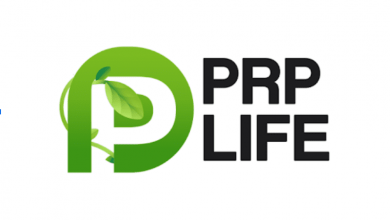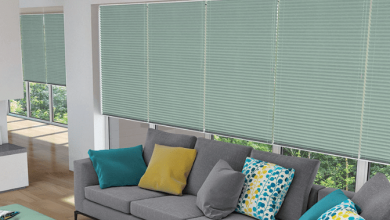From Berlin to Bangalore to Columbia, SC: Professional Web Design That’s Redefining the Digital Global Village
I’ve been in the business of pixels, prototypes, and perplexed clients for nearly two decades now. And if there’s one truth I’ve learned, it’s this: design is global. Whether I’m analyzing a bold new UI decision from Tokyo or watching a Berlin-based startup reinvent navigation menus with eye-tracking AI, the sheer diversity in web design approaches can be both thrilling and exhausting.
Yet despite the flash and noise of the international scene, something amazing is happening in the not-so-flashy heart of South Carolina. Yes, I’m talking about Columbia—a city known more for hospitality than headline-grabbing tech—but also where we at Web Design Columbia (WDC, if you prefer the cooler acronym) have quietly built a design culture that punches way above its weight class.
We don’t wear black turtlenecks to work or spend afternoons pondering UX in a gravity-free room. What we do is craft professional web design in Columbia, SC, with a global sensibility—without billing like a Manhattan agency. And that might just be our not-so-secret advantage.
When the World Designs Differently, We Take Notes
Let me take you to Sweden for a moment, where IKEA’s digital presence recently underwent a UX overhaul. Their designers didn’t just simplify things—they created a web experience that reacts to your emotional state, using user testing tied to facial recognition tools. Wild, right?
In India, Paytm redesigned its portal for lower-end Android devices, optimizing loading times to just over a second, even on shaky 3G networks. It worked. Their bounce rate dropped by 24%. In Argentina, a group of designers incorporated rural internet conditions into their standard QA testing because they realized that even the most beautiful Figma prototype is meaningless if it can’t load in a rural area.
Now, what does this global tour have to do with professional web design in Columbia, SC? Everything.
At WDC, we routinely integrate lessons from these international case studies. We believe a site shouldn’t just look good on a MacBook Pro connected to Google Fiber. It should load fast in a college dorm with bad Wi-Fi. It should feel intuitive whether you’re in Columbia or Cape Town. It should understand that users don’t read—they scan—and they don’t wait—they bounce.
The Rise of Design Minimalism (And Why Sometimes It’s Too Minimal)
Global trends have been worshipping at the altar of minimalism for over a decade now. White space reigns supreme. Text is treated like a liability. Buttons disappear until you hover over them like some sort of UI treasure hunt. Apple made it cool, and everyone followed suit.
But here’s the thing: the pendulum is starting to swing back. In a 2024 UX study by NNGroup, over 67% of participants said that ultra-minimal sites made them “feel lost” or “unsure what to do next.” Trust plummets when you can’t tell whether the button is a button or just a modernist homage to Helvetica.
That’s why at Web Design Columbia, we believe in a different kind of balance. We refer to it as “intentional design.” Sure, we use white space—but not to hide a lack of strategy. We keep interfaces clean—but not at the cost of clarity. It’s what allows us to produce professional web design in Columbia, SC that doesn’t sacrifice usability for aesthetic trends.
It also doesn’t hurt that we’ve been doing this for nearly twenty years. We’ve seen the skeuomorphism craze come and go (remember those leather-textured contact forms?), and we’ve learned that just because a trend is hot in Berlin doesn’t mean it’s right for a Columbia-based CPA firm.
Design Tools That Changed the Game (and Sometimes Broke It)
Let’s talk tools. We work with the usual suspects: Figma, Adobe XD, Webflow. And yes, we’ve been known to fire up Spline or Three.js when a client wants just a taste of 3D flair.
Globally, tools like Vev, Uizard, and even AI design co-pilots like Galileo are shaking up the industry. Galileo can generate entire UI layouts from simple prompts, which sounds impressive—until it drops your site logo behind a floating modal and deletes your footer. Automation is tremendous, but it’s also clumsy.
This is where professional web design in Columbia, SC, stands out: we don’t chase tech for the sake of tech. At WDC, we beta-test, we tinker, and we integrate—but we always sanity-check. We still open DevTools manually. We still squint at mobile breakpoints. The magic lies in blending intelligent automation with human logic—and let’s be honest, most AI hasn’t yet nailed font pairing.
Let’s Talk Pricing (Yes, Really)
Now, you might wonder if all this global savvy translates to global-level pricing. Spoiler alert: it doesn’t.
We’ve always believed that professional web design in Columbia, SC should be accessible to local businesses, non-profits, and startups—not just national chains or VC-backed tech darlings. Our pricing doesn’t come with hidden clauses, post-launch “surprises,” or fees that require a lawyer to decipher.
In fact, clients often come to us after trying an overpriced out-of-town agency, only to find themselves with a beautiful homepage and zero conversions. Affordability without compromise has been our thing since the MySpace days (yes, we’re that old).
The Global Impact of Micro-Animations (And Why Columbia Doesn’t Overdo It)
A recent case study from Shopify’s UX research lab revealed that incorporating micro-animations into buttons increased interaction rates by 18%. A subtle hover effect. A small pop. A rotating arrow. These things matter.
But here’s the catch: overdo it, and your website turns into a Vegas slot machine. We once helped a client in Columbia recover from a previous design where every element had a bounce animation. It looked like a trampoline convention.
At WDC, we like to use animation like hot sauce—just enough to make it enjoyable. We use Framer Motion when we want emotion. We animate scrolls only when they support the story. Our belief? If an animation doesn’t add clarity or joy, it’s probably just noise.
And yes, that philosophy is baked into all our professional web design projects in Columbia, SC.
One More Thing Before We Roll Into Part Two
If you’ve made it this far, you’ve already seen how WDC treats design as more than pixels and padding. We view web design as a language—shaped by culture, adapted to region, and constantly evolving.
And whether you’re in a Columbia law office or running an eCommerce store in Bangalore, the principles of good design remain universal: clarity, function, beauty, and speed.
In part two, I’ll discuss color trends, dark mode UX, accessibility innovations, typography truths, and share one final (and slightly personal) story about the weirdest design request I’ve ever received. I’ll also offer a few thoughts on how to evaluate whether your current website is helping or hurting your bottom line.
But before we jump ahead, if you’re curious about what professional web design in Columbia, SC looks like when experience meets affordability, feel free to sneak a peek at webdesigncolumbia.us. Just don’t be surprised if you start taking screenshots.
The Global Voices Behind Every Click — And Why Columbia Is Listening
Let’s begin with something deceptively simple: color. According to a 2024 design audit by UX Collective, over 80% of high-performing websites updated their color palettes in the last two years. That might sound like a minor cosmetic tweak, but colors are powerful communicators. In Japan, soft pastels are the dominant color palette on health and wellness sites. In Germany, muted grays and black convey precision and efficiency. Meanwhile, websites in Brazil and Mexico boldly mix neons, primary tones, and gradients in ways that American designers often hesitate to try.
We take this seriously at Web Design Columbia. Our philosophy? Let the story of the brand guide the palette, not the latest Dribbble trend. That’s how we’ve helped food startups in South Carolina feel fresh, while keeping law firms feeling authoritative. It’s one of the many ways we implement professional web design in Columbia, SC that feels intentional, not trendy.
But color is just the beginning.
The Light and Dark of Design: Literally
Dark mode isn’t a new concept, but its adoption is accelerating globally. As of late 2023, over 92% of Android users and 82% of iOS users have it enabled by default. But here’s the problem: a huge chunk of websites still fail to provide a decent dark mode experience.
At WDC, we learned that lesson the hard way. A client once requested dark mode after launch, without realizing it would require reconfiguring all imagery, logo variants, and even rewriting a few CSS layers from scratch. We did it, of course. However, the lesson stuck: build for it from the very beginning.
It’s now a standard part of our professional web design planning in Columbia, SC. Because good UX doesn’t just follow users—it prepares for them.
The Typography Trap (And How Not to Fall Into It)
Typography is where some designers showcase their skills—and where users often become frustrated. Global studies reveal that mismatched fonts and over-stylized typefaces increase cognitive load, slow down reading, and in some cases, literally cause users to abandon a page. A 2023 case from a UK e-learning company showed a 12% drop in engagement after switching to a more “artsy” font.
We’ve all been there. You open a sleek-looking site, but everything feels a bit… off. Too narrow. Too squiggly. Too spaced out. At Web Design Columbia, we prioritize readability before cleverness. Every font is tested on both high-end Retina displays and your aunt’s aging HP laptop.
Because professional web design in Columbia, SC needs to speak clearly. Not whisper in italics.
When Accessibility Isn’t Optional (And Never Should Have Been)
This might be the most crucial section in the article, so let’s not mince words.
There are over one billion people globally living with some form of disability. Yet, as of 2024, over 95% of websites still fail to meet basic WCAG accessibility guidelines. That’s staggering.
Big companies are waking up—partly because of lawsuits, partly because of conscience. Beyoncé’s website was famously sued for being inaccessible to blind users. Domino’s Pizza tried to avoid liability in a similar case—and lost in the Supreme Court.
At WDC, accessibility isn’t a “feature.” It’s baked into every project. Whether it’s color contrast, alt tags, tab navigation, or screen reader compatibility, we build with humans in mind. All of them. Because that’s what professional web design in Columbia, SC should do—create inclusive experiences, not just pretty ones.
When Websites Get Weird: A Personal Interlude
Let me lighten the mood with a true story.
Years ago, a client (who shall remain anonymous but may or may not have been involved in alternative pet therapy) asked us to build a homepage that meows when you hover over the navigation menu. Not just once. Every. Single. Time.
We said no.
But we learned something important: boundaries are essential. Good design requires saying no to bad ideas, even if they’re… well, incredibly original. That’s part of the experience we bring to every professional web design project in Columbia, SC—helping clients not just realize a vision, but refine it into something users will actually appreciate.
The Quiet Revolution of Web Hosting Optimization
Let’s talk about something deeply unsexy: hosting.
Most small businesses never think about their hosting infrastructure until something breaks. Or slows down. Or goes offline the moment Google decides to crawl the site.
Globally, hosting choices are becoming more sophisticated. Even Shopify, despite offering “fully managed hosting,” now encourages users to implement CDN-level performance tweaks. WordPress sites often live or die by their hosting quality—yet most designers still default to whatever’s popular (usually GoDaddy or Bluehost).
At Web Design Columbia, we don’t believe in one-size-fits-all. Some of our best builds run on LiteSpeed servers, while others utilize Hetzner for its affordability or Cloudflare for its advanced caching logic. Every choice is tuned for speed, scalability, and SEO impact. It’s one of those areas where nearly 20 years of experience gives us a sharp edge.
Yes, even infrastructure deserves professional web design in Columbia, SC, thinking.
Trends We’re Watching (And Skeptical Of)
We don’t jump on every bandwagon, and we’ve got the scars to prove it.
The rise of no-code tools like Wix Studio and Webflow has made building sites more accessible, which is excellent. However, it has also led to bloated, slow, and often difficult-to-maintain frontends. We’ve migrated multiple clients off those platforms after they realized they were paying premium prices for code they couldn’t customize.
Voice UX? Promising. But still wildly inconsistent across devices. VR websites? Cool in theory. Mostly ignored in practice. Parallax? Only when used with restraint.
That’s why WDC always strikes a balance between curiosity and caution. It’s the secret sauce behind all our professional web design in Columbia, SC builds—try new tech, sure, but always ask: does this actually help the user?
Bringing It Back Home: Columbia’s Digital Confidence
Here’s the surprising truth: Columbia, South Carolina, isn’t just keeping up—it’s defining its standards.
We’ve worked with nonprofits, regional e-commerce stores, local government departments, and startups trying to make their first $10 online. And in every case, our job at Web Design Columbia has been to give them not just a beautiful site, but a strategic one as well.
In this global design village, it doesn’t matter if you’re in Berlin or Bangalore—what matters is that your website works. It tells your story. It earns trust before it asks for a click. And if that’s what you’re after, you’ll find it right here in Columbia.
So, if you’re tired of overpriced agencies that disappear after launch, or site builders that promise magic but deliver a mess, check out webdesigncolumbia.us. We may not be the loudest name in the industry, but our work speaks louder than our marketing ever could.
And if you ever hear a website meow at you… It probably wasn’t us.




